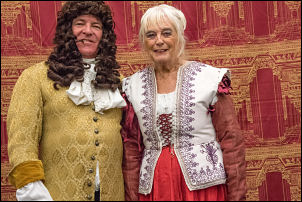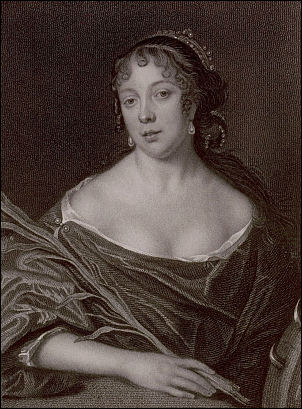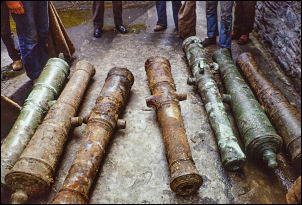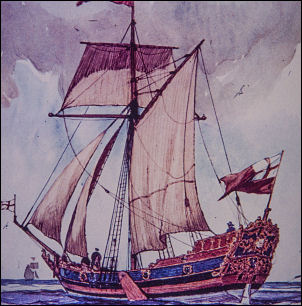|
Thu 23 Nov 2017
Lizzie Jones
presents Pepys Diaries |
|
|
|
Attending any presentation by Lizzie
Jones is not just entertaining but extremely informative with
many historical gems included. This evening at Chorley’s Trinity
Church Lizzie and Neil gave us an amazing insight into the 17th
century world of Samuel Pepys. Although he is most famous for
his diaries they only documented 9 years of his long life. He
wrote the diaries between the ages of 26 to 35 years of age and
continued to live on to the age of 70.
The diaries were
written in a mix of languages and shorthand.
His wife
Elizabeth died at the age of 29 and Pepys didn’t re-marry. From
lowly beginnings he was educated at Huntingdon Grammar School,
the same school that Oliver Cromwell attended though not at the
same time! |

Neil and Lizzie |
|
His early working life was assisting
Sir Edward Montagu. Pepys went on to be a major administrator
and organiser in the Admiralty and could be said to have set op
the foundations for the modern Navy.
Pepys was one of the
most important civil servants of his age and was also a widely
cultivated man, taking an interest in books, music, the theatre,
science & female company.
His diaries are the only account of
how the administration was set up. His fortunes increased and he
documented his worth in his diaries. |

Neil (Pepys) and Lizzie
(narrator) |
1660 worth £300, 1662 worth £650, 1663 worth £800, 1664 worth
£1,349, 1666, £6,200. Probably the equivalent of a millionaire
today.
He was well connected with royalty and a close adviser
to the King, Charles II. However, he preferred the company of
the King’s brother James – Duke of York. Charles II died in 1685
at the age of 54 and James succeeded him, becoming James II of
England
Everyday life was documented including the great fire
of London in Sept. 1666.
After Charles II was defeated at the
Battle of Worcester in 1651 at the end of the Civil War he
escaped into exile. |

Samuel Pepys FRS (1633–1703) |
|
The later part was spent in Amsterdam
where he was very impressed with their sailing vessels or
yachts. The King returned to England and was restored to the
throne in 1660. The Burgomaster of Amsterdam presented him with
the Yacht Mary which became the first Royal Yacht. Charles was
very impressed with it and Pepys referred to his infatuation in
his diary. |

Elisabeth Pepys
(Élisabeth de St. Michel)
(1640–1669) |
|

Some of the guns from the Mary |

The Royal Yacht 'Mary' |
On August 15, 1660, Pepys records:
"To the office, and after dinner by water to White Hall, where I
found the King gone this morning by five of the clock to see a
Dutch pleasure-boat below bridge where he dines, and my Lord
with him, the King do tire all his people that are about him
with early rising since he came." |
The Royal family continued the Royal
Yacht tradition and since 1660 there have been 84 Royal Yachts,
the last being HMY Brittannia which was decommissioned in 1997
and not replaced.
The ‘Mary’ eventually went into naval
service and was wrecks off the Skerries, Anglesey in 1675. An
interesting Chorley connection is that in 1971 a team of divers
from Chorley Sub-Aqua Club found a Dutch bronze canon from the
wreck. Further investigation revealed the rest of the ships
contents and full complement of 8 bronze canon, 2 Dutch and 6
English. They are all now in the Merseyside Maritime Museum. |
B.H.